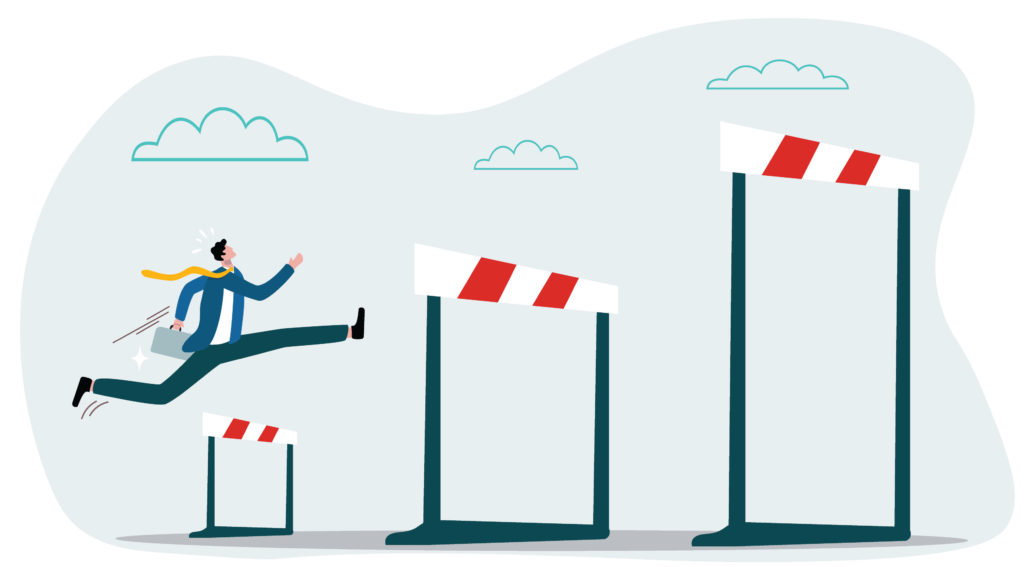At MPI, we believe that nine key factors contribute to the success of any outbound calling program.
Industry and known challenges is the seventh factor that we believe contribute to a successful outbound calling program. We’ve already covered: list quality and quantity, message, nurture, sales process, ROI requirements, and title and size of companies as the first six factors – so how does awareness of challenges help a sales team thrive? This factor asks salespeople: Are you aware of your buyer’s purchasing cycle and any outside factors that might contribute to their decision to purchase?
Staying attuned to the industry that your product or service targets might sound like a given in the world of sales, but it’s something that is often only known at the surface level. Taking a deep-dive look at the industry you’re selling to, understanding the buyer’s purchasing cycle, and keeping on top of any outside factors that might affect sales is a game-changer for sales teams.
Most clients fall into three different categories: The targets are difficult to reach, and current events are discouraging purchases, the product or service is not reviewed or renewed very often, or the targets have a regular buying review and there are current events that are pushing the decision to purchase. We’ll review each of these and go over solutions to face those challenges head on.
Challenge: The targets are difficult to reach, and current events discourage purchase decisions
Some prospects are just harder to connect with. C-Suite contacts might be the ultimate decision maker, but they are typically more difficult to get on the phone or open an email. Many times, they have gatekeepers to get past, which can involve a separate sales approach to negotiate your way through. Then, when you do connect with them, you will likely have a very short timeframe to catch their attention and make an impact.
Another approach salespeople use is to find other contacts at the company that would be able to influence the purchase decision. A good place to start would be the person or department that would be directly using the product or service. That contact would be easier to connect with and would likely be able to get in front of the decision maker as an ambassador for your product or service.
Sales don’t happen in a silo. They are heavily influenced by what happens in the outside world so it’s important for sales teams stay on top of current events. A great example of this in the B2C world is during the quarantine phase of the COVID pandemic, sales on home items soared. People were spending more time at home and had time to make those improvements they were putting off because they could not go anywhere. Plus, they needed a more formal home office space, or some kitchen gadget could make homemade meals easier. Then, as quarantine ended and more events started to occur, restaurants and businesses reopened, those sales plummeted back to normal levels, which left retailers with an overstock of merchandise they had been over-buying because of the current events. It’s just as important for those in the B2B sales world to stay on top of the current events and industry trends in order to ensure their messaging, timing, and approach to their sales efforts will be well received.
Challenge: Product or Service is Not Reviewed or Renewed Often
Timing is everything in sales. Knowing your product or service sales cycle and how it aligns with your buyers’ purchasing cycle is a critical element in the overall sales process. There are certain items buyers will constantly be looking for, and others might only come up once a year or have an even longer-term contract commitment. Those with long-term commitments and annual renewals benefit from longer nurturing sales and marketing tactics so that when the time comes, your company or brand will be top of mind. It’s important for salespeople to know the right time to ramp up their efforts as decision time comes closer for review.
Targets have a regular buying review and renewals and there are current events that are pushing the decision to purchase
This is a great place for businesses to be. When products and services are consistently sourced by buyers, it always gives salespeople a foot in the door. Just as important, sales teams that are attuned to outside factors affecting the purchasing demand can help salespeople know when to increase their efforts and speed to get in front of buyers or when to back off. There is no downside to having a prepared sales team that has a deep understanding of their product and sales cycle and how outside factors can affect their selling ability.
There’s no doubt that sales teams need to have a finger on the pulse of the industry they serve. They need to have a well-defined sales cycle that matches up with their target buyer’s purchasing cycle as well as awareness of economic and market influencers that might affect their ability to sell. Being knowledgeable about both factors will not only position the company as experts in their field to their targets, but also help set up successful processes and expectations internally.
MPI helps businesses connect with their target prospects and build a database of buyer qualified leads. Contact us to learn more about our B2B sales development program.




